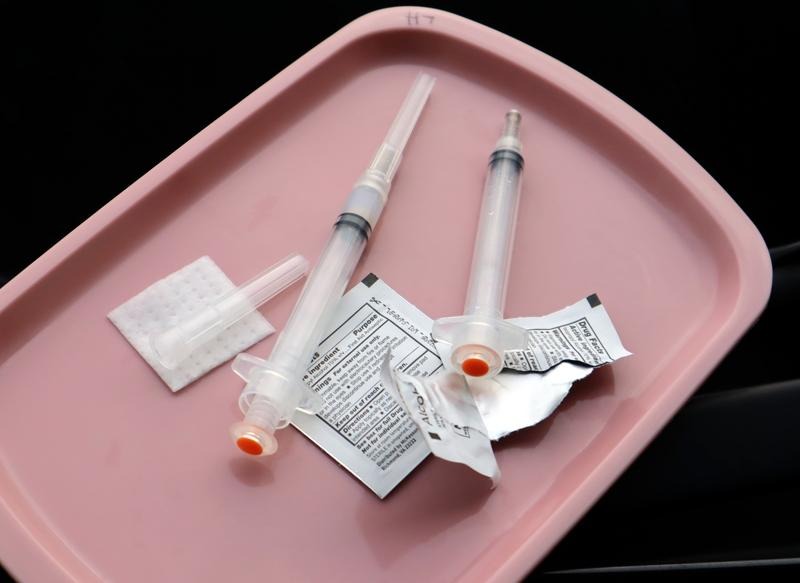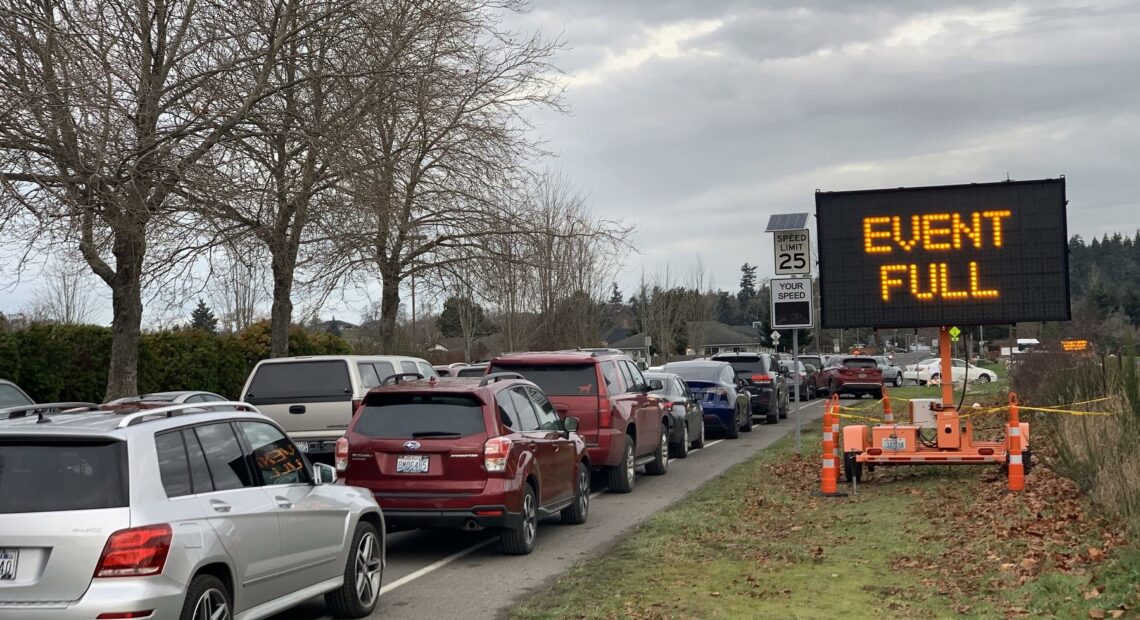
Community Immunity Is In Reach For Some Northwest Cities And Counties, Further Away For Others
READ ON
Hesitancy to get vaccinated against the coronavirus has justifiably drawn considerable attention because some counties and neighborhoods are lagging far behind in the campaign to stamp out COVID-19. Less often do you hear about the COVID-19 vaccination overachievers. In recent weeks, pockets of the Pacific Northwest have exceeded the threshold for community immunity. But the variability of inoculation rates across the region limits the protection earned, according to health officials.
San Juan County is tops in Washington state for vaccinating eligible people. More than 77% of those 16 years old and above in the archipelago have gotten at least one dose of the COVID-19 vaccine. Washington’s most populous county, King County, has pulled into second place with 72% of people age 16+ having received at least one dose of vaccine, as of Saturday.
Corvallis and surrounding Benton County are tops in Oregon with 69% of the 16+ population having gotten at least one shot. Hood River County is close behind at 68%. Oregon’s most populous county, Multnomah, is in third place in the state with 67% of its adult population going in for a shot so far.
A report on vaccination equity prepared by the Benton County Health Department credited the use of multiple kinds of vaccination clinics ranging from a mass vax site at OSU’s Reser Stadium to mobile clinics at rural schools and farms. The local transit agency offered free transportation to vaccination appointments and the county also organized a Vaccine Confidence Coalition.
Blaine County, home to the ritzy Sun Valley resort community, claims bragging rights in Idaho — and across the whole Northwest for that matter — with 78% of its population, age 12+, at least partially vaccinated.
Depending on the county, between 33% and 69% of adults (16+ years old) in Oregon are at least partially vaccinated. The statewide average in Oregon is 61%, according to a Monday update of the COVID-19 data dashboard maintained by the Oregon Health Authority.
In Washington state, vaccination rates by county vary more widely — from as low as 28% up to 77% of adults (16+ years old). The statewide average is 60%, as reported Monday by the state Department of Health.
Idaho shows the widest variation in county vaccination rates among the Northwest states. COVID-19 vaccine uptake is as low as 25% in rural counties and tops out at 78% in the aforementioned upscale resort area, according to the Idaho Division of Public Health data dashboard. The statewide vaccine uptake rate is 44% of eligible residents age 12 and above.
“I’m hopeful that we do not see a tale of two cities, or a tale of two states or a tale of two nations,” said Washington State Secretary of Health Dr. Umair Shah in response to a question from public radio this past week. “That is going to really be awful if we start to see incredible inequities when it comes to who is being hospitalized.”
Last month, the Oregon Health Authority and Public Health – Seattle & King County began providing vaccination data down to the zip code level. That allows for a comparison of vaccination rates among Northwest cities, though data for non-metro Washington cities is hard to find.
Among cities, Mercer Island (pop. 26,675), a well-off suburb of Seattle takes the cake, with 90% of those age 12+ going in for vaccination.
Cannon Beach has a claim for the gold medal in Oregon with 76% of its total population (all ages) vaccinated.
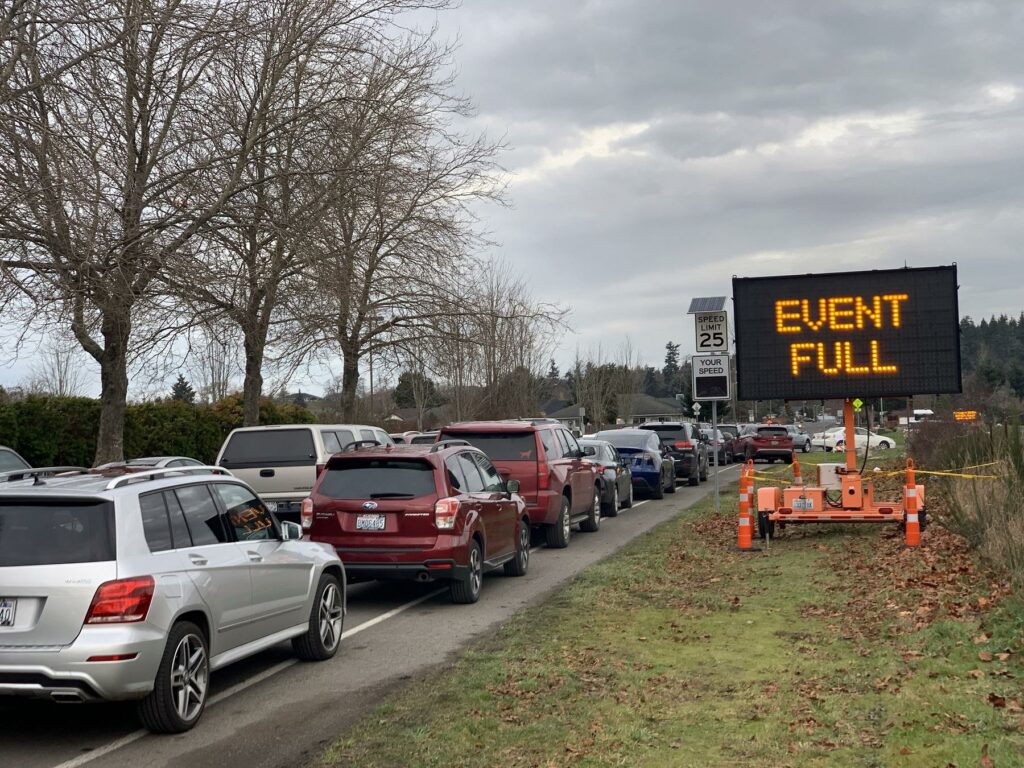
Eager seniors filled up all of the first come, first serve slots at a drive-thru COVID vaccination clinic before the first shots were even given on Thursday, Jan. 14, 2021, in Sequim, Washington. CREDIT: Tom Banse/N3
Fire chief Christopher Carleton supervised the drive-thru vaccination site for unincorporated Point Roberts, Washington. He estimated 75%-80% of the population of the peninsula right below the Canadian border is fully vaccinated. Numbers like that suggest community immunity is in reach, if not already achieved.
“I’m extremely proud of my community,” Carleton said in an interview, “for stepping up in such droves to come get vaccinated.”
He said that being able in recent days to unmask, ”to shake hands again, being able to hug other people, being able to sit at a table and have full conversations,” all contributed to an uplifted outlook.
Herd immunity is a form of indirect disease protection that can occur when a sufficient percentage of a population has become immune to infection, whether through vaccination or prior sickness, thereby reducing the likelihood of infection for everyone in the community.
Shah, the state Secretary of Health, said vaccination rates around the 90% mark achieved by Mercer Island and nearby Sammamish, Washington, implied “a great place to be protected.” But he cautioned that the mobility of American society and the variability of vaccine uptake across the region raise significant caveats.
“It is important, but I think it is also complex because we don’t just stay in the community we are living in,” Shah said. “Just because you have a high vaccination rate where you live, if you work three doors down — three counties down, what have you — you can potentially still be at risk,” Shah said.
Oregon and Washington have both set statewide goals to jab 70 percent of the adult population with at least one dose of COVID vaccine by the end of June in order to move into full reopening.
An analysis of county-by-county vaccination rates nationwide published by the health policy nonprofit Kaiser Family Foundation in mid-May identified characteristics which could predict whether a county would be a leader or laggard.
Metro counties had higher vaccination rates than rural counties. Counties with higher percentages of senior citizens had more success.
Washington, D.C.-based lead study author Jennifer Tolbert said it was unsurprising that measures of socioeconomic vulnerability also correlated with vaccination uptake.
“Higher poverty rates, which are associated with lack of insurance coverage and may contribute to other barriers to accessing vaccines, are also associated with lower county vaccination rates,” the report authors wrote.
“It makes sense that affluent communities with good access to health care would have relatively fast uptake of COVID vaccine,” added Public Health – Seattle & King County communications specialist Gabriel Spitzer in an email. “We know that too many communities still experience barriers to getting vaccinated, such as transportation, and Public Health is committed to an intentional strategy to ensure equitable access to vaccine.”
The Kaiser Family Foundation study also found a strong correlation with political leanings. Counties that voted for Republican Donald Trump for president in 2020 had lower vaccination rates than counties that went for Democrat Joe Biden.
These patterns hold true in the Pacific Northwest county rankings. Nearly all of the counties at the top of the vaccination leaderboard turned out heavily in favor of Biden in last November’s election.
Related Stories:

Whitman County reports first flu-related death of the season
Hospitalman Yenifer Gutierrez, left, and Hospitalman Brashea Ojeda treat COVID patients in the ICU Aboard USNS Comfort in April of 2020. Influenza deaths surpassed COVID-19 deaths for this first time
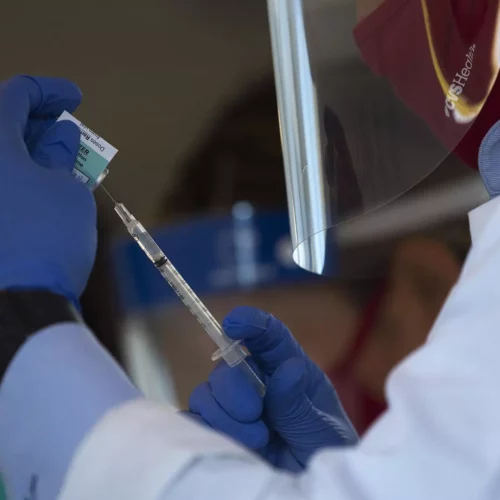
Washington ends COVID-19 vaccine requirements for state employees
Washington State employees will no longer be required to get a COVID-19 vaccination in order to keep their jobs.
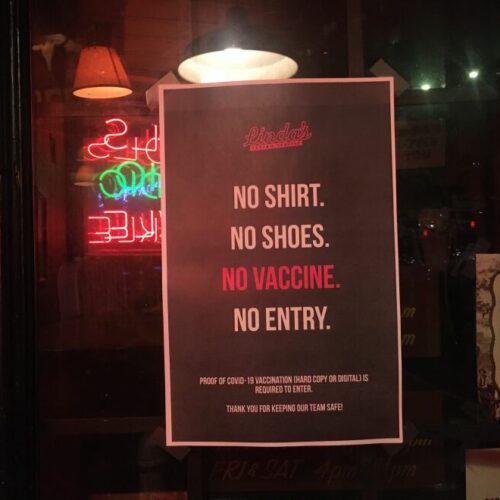
Showing Or Selling A Fake COVID-19 Vaccine Card Could Become A Crime In Washington
A proposal in the Washington Legislature would make it a crime to use or sell a fake COVID-19 vaccination card. The sponsor says he wants to deter people from even considering the ruse, but he also wants to send a signal to prosecutors to prioritize these cases as a matter of protecting public health.

